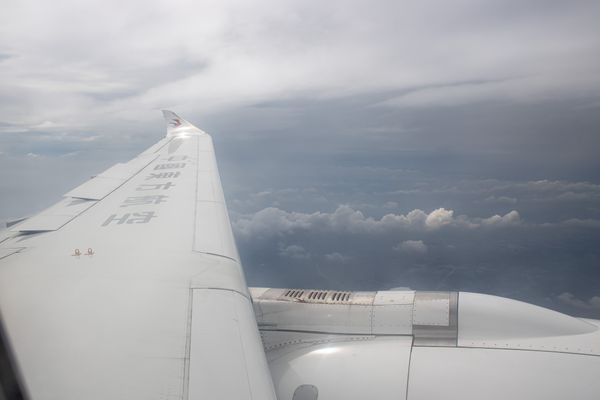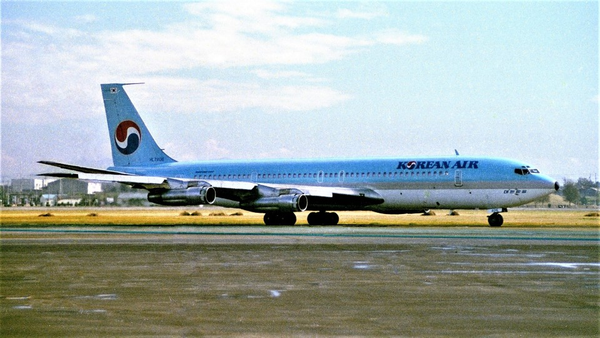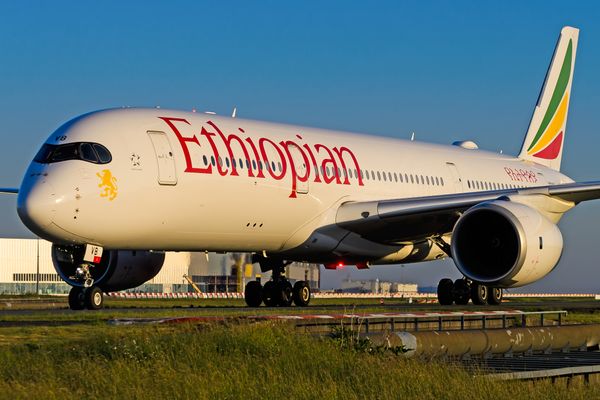If you have flown before, the chances of you having been aboard an A320 family aircraft are pretty high. However, this doesn't apply to one particular variant of the A320 family - the Airbus A318 “baby jet”.
The Ugly Duckling
While the A320 family of aircrafts has been regarded as a financial success, having sold 11,524 aircraft as of June 2024 (this includes all A318/A319/A320/A321 variants), Airbus has only managed to sell 80 A318 aircraft. The A318 is the smallest A320 family variant, with the aircraft being 6 meters shorter than the A320, and featuring approximately 50 fewer seats. The aircraft's range is also 200 miles shorter than an A320 at 3,600 miles due to smaller fuel tanks.
While a glance at the numbers may get one thinking that it is significantly cheaper to buy an A318, operating the type often costs the same as larger A320 variants such as the A320 or A321. Airbus originally planned to sell the A318 as a regional jet alternative with minimal training needed between its larger variants. The aerospace company was able to do this because the U.S. and EU classified the “baby jet” as being in the same category as its larger brothers. This significantly reduced the potential of the A318, thus buying an A320 with a little more funds made more sense to airlines.
Another major issue with the A318 was with Unit Load Devices (ULD). These devices are the "containers" that are loaded onto the lower decks of passenger jets for secure cargo operations. ULDs are operable on all A319s, A320s and A321s, but are not operable on the A318. This makes cargo operations for the type inefficient, creating an issue for smooth operations at large, busy airports.
Despite these problems, there were also aspects where the A318 shined. The aircraft type was certified for steep-angle approach at London City Airport (LCY), making it the largest commercial airliner able to operate scheduled flights at the airport. After certification, British Airways purchased two A318s for its London City to New York JFK business class route. The airline operated these flights as BA1 and BA2 and began all-business class service with the type in 2009. These flights departed from London City Airport for New York-JFK, with a refueling stop at Shannon Airport in Ireland. Passengers also deboarded at Shannon and cleared customs at the U.S. Pre Clearance facility at Shannon Airport, thus arriving in the U.S. as a domestic flight, bypassing the long security lines at JFK Airport. Unfortunately, the Club World London City service was discontinued as a direct result of the COVID-19 pandemic in 2020.
Despite initial controversy, the A318 entered service with Frontier Airlines in 2003. In the end, Airbus managed to sell only 80 A318s from 2001 to 2013. Compared to other "similar" jets, Boeing delivered 4,006 Boeing 737s in the same period, while Airbus delivered 2,651 A320s and 1,077 A319s. Of the 80 baby jets delivered, 25 remain in operation as of August 2024.
Which Airlines Currently Operate the Type?
Nowadays, the A318 is an endangered species, only regularly seen in its natural habitats in Paris and Bucharest. Today, only two airlines operate the A318 on regular commercial services: Air France and TAROM Romanian Airlines. Interestingly, both airlines are members of the SkyTeam alliance, so it might be good news for those who are earning miles for a SkyTeam airline.
Air France
Air France currently operates 6 A318s, though one is parked for maintenance at the time of writing. Air France's A318 fleet is listed below:
F-GUGM (parked for maintenance)
F-GUGN
F-GUGO
F-GUGP
F-GUGQ
F-GUGR
Most of these aircraft are based in both major airports in Paris, those being Paris-Charles de Gaulle (CDG) and Paris-Orly (ORY). The baby jet is mostly seen flying routes between Paris and Marseille (MRS), Nice (NCE), Lyon (LYS) and Toulouse (TLS). However, Air Frances CDG based A318s fly internationally to various destinations such as London-Heathrow (LHR), Florence (FLR), Amsterdam (AMS), and Naples (NAP). They sometimes also fly to Bordeaux (BOD), Oslo (OSL), Barcelona (BCN) and Munich (MUC).
TAROM currently operates 4 A318s, though 2 are withdrawn from use and are stored at Bucharest Airport (OTP). One A318 is parked for maintenance, so at the time of writing, only one A318 is flying for TAROM, registration YR-ASA. The TAROM A318 fleet currently consists of the following aircraft:
YR-ASA
YR-ASB (stored since November 2023)
YR-ASC (stored since September 2022)
YR-ASD (parked for maintenance)
With only one A318 currently flying the skies, the sole TAROM baby jet is used to fly on short to medium haul European routes. While hard to pinpoint what route YR-ASA operates on a daily basis, the aircraft does consistently fly the following routes:
Bucharest (OTP) to London-Heathrow (LHR)
Bucharest (OTP) to Istanbul (IST)
Bucharest (OTP) to Cluj-Napoca (CLJ)
Other routes include Cairo (CAI) and Prague (PRG).
Business Jets
Should one have enough funds, one might be able to board a flight on one of the A318s intended for business use. These special A318s, designated ACJ318s, can be chartered for personal use. While costs vary greatly depending on service and destination, this is theoretically the most surefire way to snag a flight on the A318.
In 2024, the A318 has become quite a rare aircraft to be able to fly. Should you manage to snag a flight on one, you might as well consider yourself a lucky avgeek! Safe travels.
No "Mate's Rates" in the Sky as Qantas Bans All Staff (Including CEO) From New A350 First Class » Gulf Air and Turkish Airlines Expand Codeshare Partnership » The Runway is Obsolete: Jekta Swiss is Resurrecting the Flying Boat for the 21st Century »
Comments (0)
Add Your Comment
SHARE
TAGS
STORIES A318TAROMAir FranceRECENTLY PUBLISHED
 VIDEO: What It's Like Onboard China's COMAC C919
We flew onboard China Eastern's COMAC C919 to experience China's homegrown narrow-body up close. From seat comfort to cabin layout to noise levels to tech: how does it really compare with the Boeing 737 and Airbus A320? This review puts all three workhorses under the same spotlight.
TRIP REPORTS
READ MORE »
VIDEO: What It's Like Onboard China's COMAC C919
We flew onboard China Eastern's COMAC C919 to experience China's homegrown narrow-body up close. From seat comfort to cabin layout to noise levels to tech: how does it really compare with the Boeing 737 and Airbus A320? This review puts all three workhorses under the same spotlight.
TRIP REPORTS
READ MORE »
 KAL858: The North Korean Bombing that Shocked the World
Among the 99 passengers boarding Korean Air Flight 858 on November 29, 1987, few could imagine their journey would end as one of aviation's darkest mysteries.
STORIES
READ MORE »
KAL858: The North Korean Bombing that Shocked the World
Among the 99 passengers boarding Korean Air Flight 858 on November 29, 1987, few could imagine their journey would end as one of aviation's darkest mysteries.
STORIES
READ MORE »
 Ghost Networks: The Rise, Fall, and Revival of Fifth-Freedom Flights
Fifth-freedom flights — routes where an airline flies between two countries outside its home base — have always lived in aviation's twilight zone. We chart their rise, their near-disappearance, and the surprising markets where they still thrive today. Then we take you on board a special Seoul-Tokyo fifth-freedom flight to show how the experience stacks up against a typical regional carrier.
TRIP REPORTS
READ MORE »
Ghost Networks: The Rise, Fall, and Revival of Fifth-Freedom Flights
Fifth-freedom flights — routes where an airline flies between two countries outside its home base — have always lived in aviation's twilight zone. We chart their rise, their near-disappearance, and the surprising markets where they still thrive today. Then we take you on board a special Seoul-Tokyo fifth-freedom flight to show how the experience stacks up against a typical regional carrier.
TRIP REPORTS
READ MORE »



